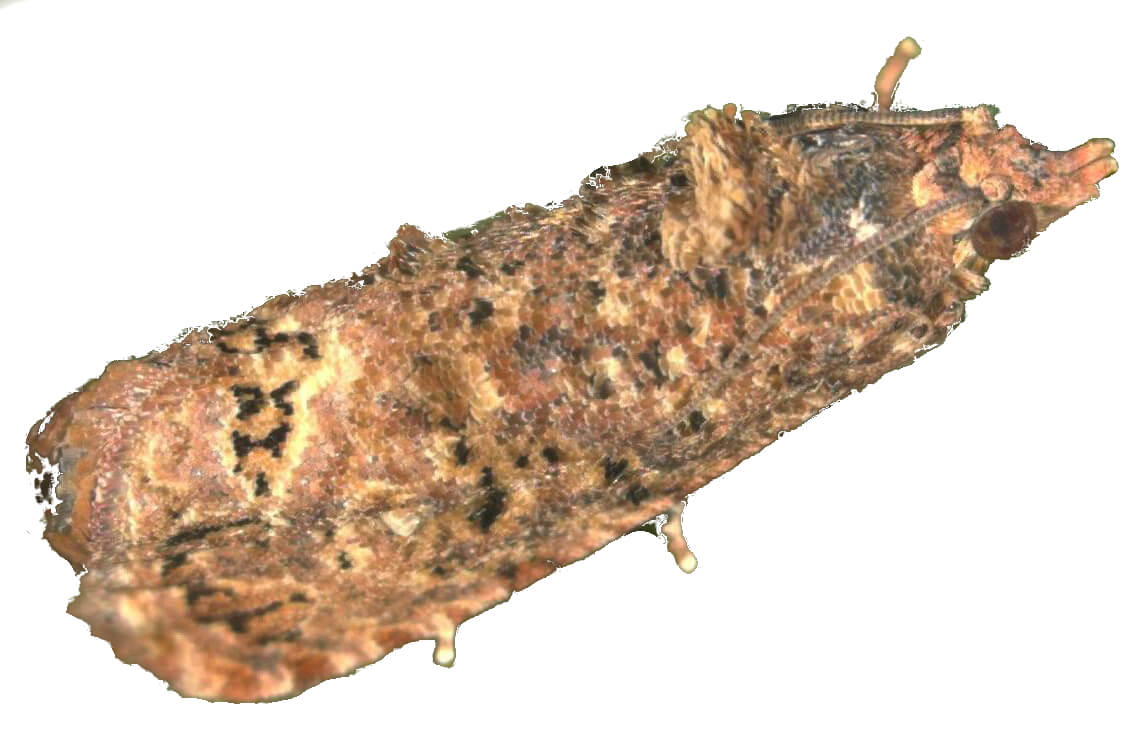 False codling moth. The moth has caused strict measures on Kenya fresh produce especially chilli and some fruits that are exported to European markets.
False codling moth. The moth has caused strict measures on Kenya fresh produce especially chilli and some fruits that are exported to European markets.
Chilli farmers can use a crytrack, a rubber trap which is a sex lure to control and wipe false codling moth pest which has forced the European Union (EU) market to impose tough regulations on the produce and other crops affected by the pest from Kenya.
According to Horticultural Crops Development Authority (HCDA) last year reports, 29 fresh produce (including chilli) export interceptions affected by the moth were made by the EU market while between April 2016 and May 2017, Kenya’s exports suffered a total of 46 such interceptions.
“The False Colding Moth, which is known to attack pepper and citrus fruits, became a notifiable pest in the EU and UK markets from January last year,” said George Nchari of Kenya Plant Health Inspectorate Service (KEPHIS), Timau branch.
Crytrack now comes handy at the rescue of the farmers. This trap contains pheromones which are attractants produced by female false codling moth when ready to mate. The pheromones attract specifically male adult moths of the moth.
RELATED ARTICLE: Sex trap tames voracious moth
The crytrack lure must be used in combination with a sticky paper incorporated in a delta-trap, according to Aaron Muteria, agronomist at Kenya Biologics Limited, a company that makes bio-insecticides, bio-fungicides, bio-stimulants and crop deficiency correctors.
“Once outside its original sealed packaging, the crytrack lure will start releasing its pheromones over a time period of at least six weeks. This will attract male false codling moth moths that will be caught on the sticky paper. This will prevent the moth from reproducing and will enable you to obtain information from the catches,” said Muteria.
“Due to the limited reach of approximately 50 meters, crytrack will not attract any additional moths to your crops than the ones already present at that time.”
RELATED ARTICLE: FACT SHEET: Controlling DiamondBack moth in vegetables
The benefit of using this type of trap over others is that provides easy to obtain information that can indicate critical changes in population dynamics and behaviour of the false codling moth. This can be used to determine if and what kinds of treatments are necessary, said Nchari.
In addition, pheromones released by crytrack occur naturally all over the world. Many reviews over the years have confirmed that these products pose no risks to human health as the trap is specific to the false codling moth and no adverse effects will occur to non-target organisms, according to Muteria.
How to use the crytrap:
- 1. Fold the delta-trap in a triangular shape and insert the appendages into the slots.
- 2. Unfold the sticky paper and place it on the bottom of the delta-trap, the sticky side facing upwards.
- 3. Hang the trap at 2/3 of the crop-height inside the crop or just above the crop for low crops.
- 4. Take the CRYTRACK lure out of its sealed packaging and place it in the green container at the top of the delta-trap.
- 5. Replace lures and sticky paper every six to eight weeks, or earlier if the sticky paper is saturated with moths or dirt.
Crytrack lures can be used inside greenhouses as well as in the open field. It is advisable to use two traps per hectare for small holdings and in fields of uneven topography and one trap per hectare for large scale fields of homogeneous topography.
RELATED ARTICLE: Neem leaves save Nakuru farms from pests
Farmers are urged to monitor the traps at least twice a week recording the numbers of false codling moth moths every time.
Thresholds must be determined based on the type of crop, pest-allowance and density of the crop although dependent on these factors and other factors like temperature and wind, action thresholds have been determined at 5-7 moths caught per hectare per night.
















Comments powered by CComment